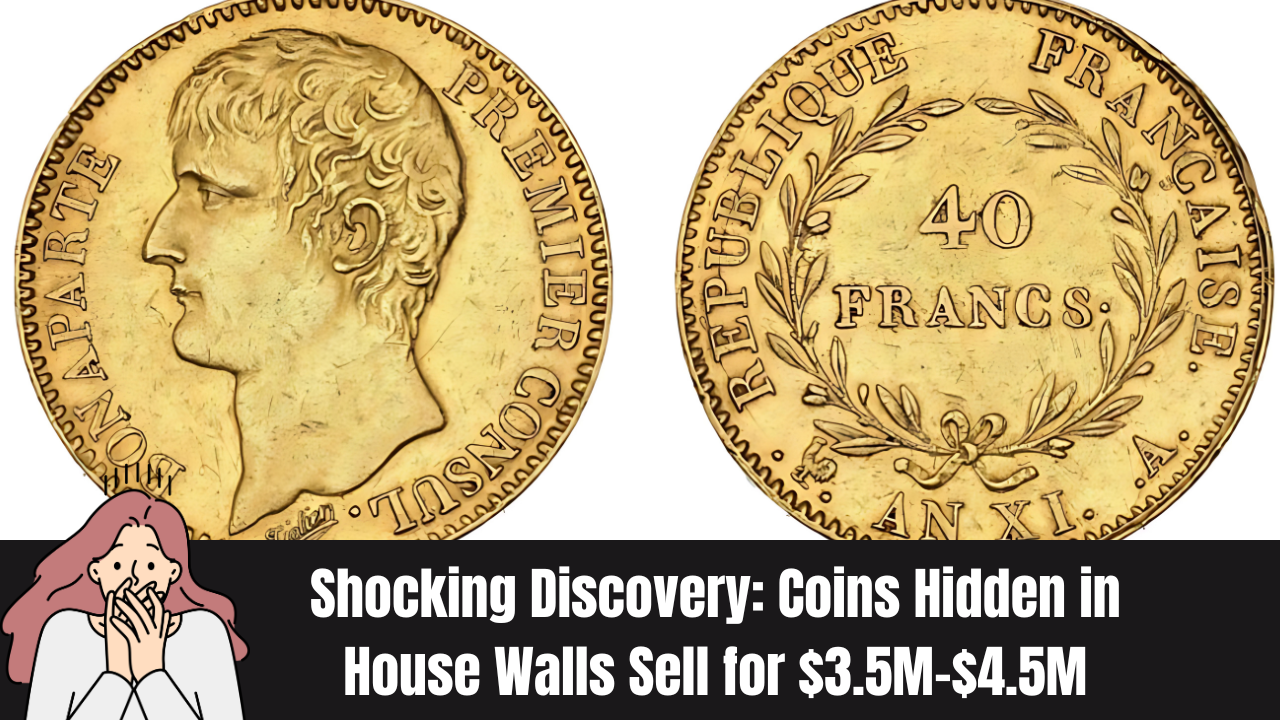A treasure trove of more than 1,000 historic gold coins, hidden for decades inside the walls of a house in a small village in southwestern France, has been sold at auction for more than 3 million euros (about $3.48 million). The collection was amassed by Paul Narce, a reclusive collector who led a simple life and dedicated all his finances to his passion for numismatics—the study and collection of Rare coins. Shocking Discovery: Coins Hidden in House Walls Sell for $3.5M–$4.5M
The coins were discovered only after Narce’s death in 2024, when a notary was tasked with locating his assets. The collection had been concealed in a small cavity behind a painting in a storage area of the house, which had been vacant since Narce moved into a nursing home a year before his passing. The discovery was described as extraordinary, both for the quantity and the unique rarities included in the collection.
The Collection: A Numismatic Marvel
The collection is notable not only for its size but also for the historical significance of the coins. Many pieces date back several centuries, including ancient coins from the Kingdom of Macedonia (336–323 BC) and nearly complete sets from the reigns of French monarchs Louis XIV, Louis XV, and Louis XVI. Among the highlights were 10 packages, each containing 172 gold 20 franc coins, which together were equivalent to a gold ingot.
Thierry Parsy, a coin specialist involved in the auction, described the collection as “extraordinary both in quantity, with over 1,000 pieces, and in the unique rarities it includes.” The auction, managed by Beaussant Lefèvre and Associates in Paris, attracted significant attention from collectors and historians alike, with the final sale price far exceeding the pre-auction estimate of 2 million euros.
The Man Behind the Collection
Paul Narce’s story is as intriguing as the coins he collected. He lived a modest life in a small village, with limited exposure to the outside world. Few people knew of his passion for numismatics, and he had no immediate heirs. His dedication to his collection was total—so much so that he invested all his finances into building it.
Narce’s collection was a lifelong project, and his meticulous organization of the coins suggests a deep personal connection to each piece. The fact that the collection was hidden in the walls of his home adds a layer of mystery and drama to the story. The coins remained undisturbed for years, until the notary’s careful search revealed their location.
The Auction and Its Impact
The auction of Narce’s collection marks a significant event in the world of numismatics. The sale of such a large and historically important collection is rare, and the prices realized reflect both the rarity and the quality of the coins. The auction house reported that all the coins were sold, with the total proceeds exceeding 3 million euros—a testament to the enduring appeal of historic gold coins among collectors.
The sale also highlights the importance of provenance and documentation in the world of collectibles. Narce’s careful organization of his collection made it easier for experts to assess its value and authenticity. The auction’s success will likely inspire other collectors and historians to revisit old collections and consider the potential value of items that may have been overlooked or forgotten.
The Broader Context of Coin Collecting
The story of Paul Narce’s collection is just one example of the fascinating world of coin collecting. Across the globe, collectors and historians are constantly uncovering hidden treasures, from coins buried for decades to collections amassed by wealthy industrialists and royalty. Each discovery adds to our understanding of history and the evolution of currency.
Coin collecting is not just a hobby for the wealthy or the eccentric. It is a pursuit that connects people across generations and cultures, offering insights into the economic, political, and social conditions of different eras. The value of a coin collection is not only measured in monetary terms but also in its historical and cultural significance.
The Future of Numismatics
The sale of Narce’s collection is likely to have a lasting impact on the field of numismatics. It serves as a reminder of the importance of preserving and documenting collections, as well as the potential for new discoveries in unexpected places. As more collectors come forward with their own stories and treasures, the field will continue to grow and evolve.
The auction also underscores the importance of professional appraisals and the role of auction houses in bringing rare and valuable items to market. With the increasing interest in collectibles and the rise of online auctions, the market for historic coins is expected to remain strong in the years to come.
FAQs
Q: How many coins were in Paul Narce’s collection?
A: The collection contained over 1,000 gold coins, including ancient and royal French pieces.
Q: Where were the coins found?
A: The coins were discovered hidden in a small cavity behind a painting in the storage area of Narce’s house in southwestern France.
Q: How much did the collection sell for at auction?
A: The collection sold for over 3 million euros (about $3.48 million), surpassing the pre-auction estimate of 2 million euros.

